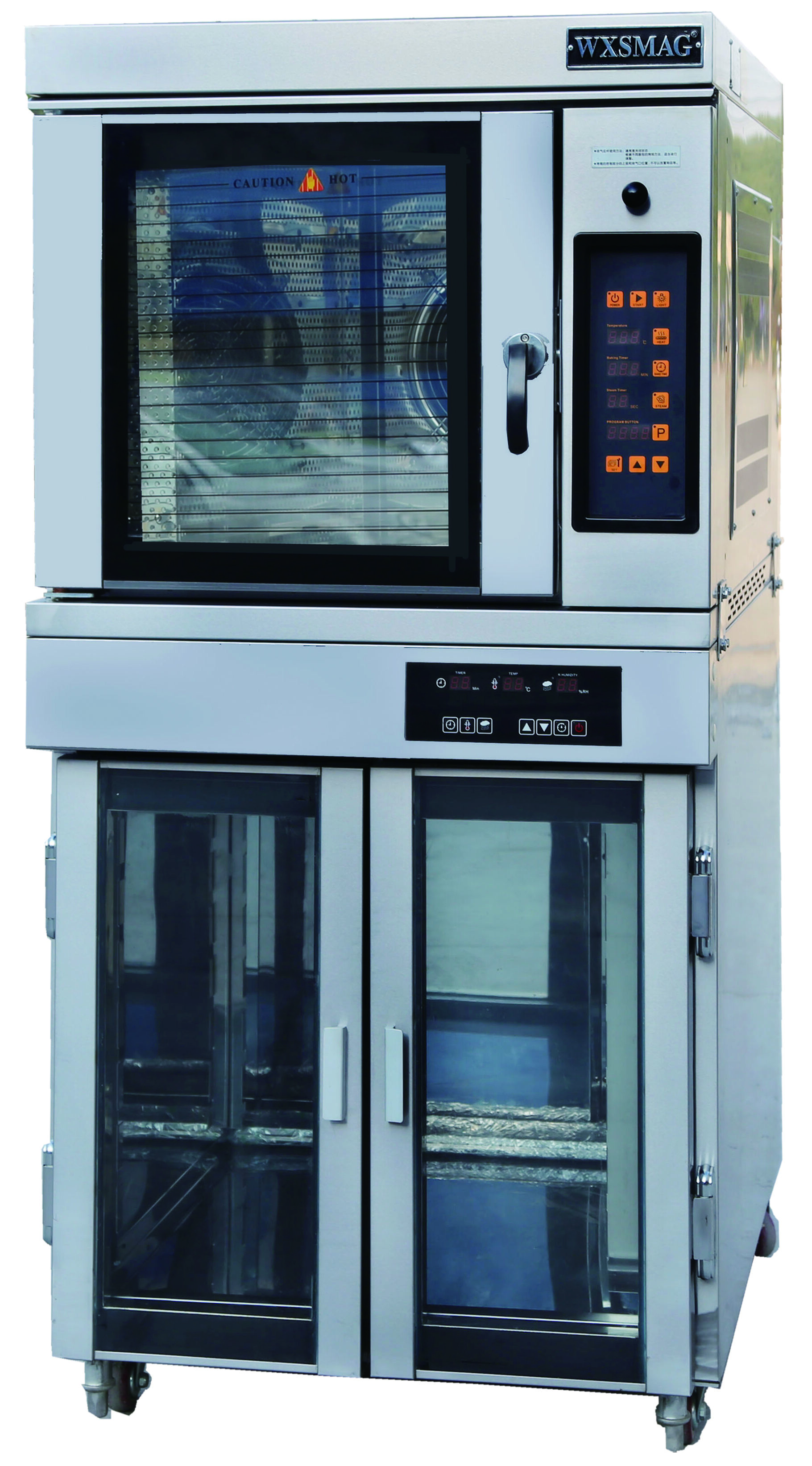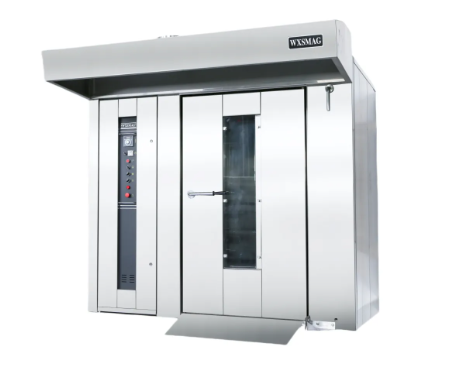Fundamentals of Hot Air Oven Technology
Mechanics of Convection Cooking Systems
Hot air ovens employ forced convection systems in which electric heating elements heat the air and integrated fans circulate the hot air. This results in a dynamic thermal domain that differs from natural convection, which relies on buoyancy-supported air flow. Heat transfer is promoted by mechanical circulation, which allows for more homogeneous distribution of power. Newer systems circulate air within the cooking chamber, which in some cases cuts the cooking time by 35%.
Role of Fan-Assisted Air Circulation in Heat Distribution
Axial fans eliminate thermal stratification—a common issue in gravity-based systems—by propelling air at 100–300 CFM (cubic feet per minute). This maintains ±3°C temperature variance across all racks, allowing simultaneous baking on multiple levels without quality loss. Commercial kitchens report 18% higher throughput compared to traditional radiant-heat ovens.
Temperature Precision Through Advanced Thermostat Control
Modern ovens employ proportional-integral-derivative (PID) controllers and redundant thermocouples to regulate temperatures within ±1°C of setpoints. Dual safety thermostats prevent scorching by disconnecting heating elements if thresholds are exceeded—critical for dehydration, where even 5°C deviations can alter texture or microbial reduction efficacy.
Energy Efficiency Advantages of Hot Air Ovens
Reduced Energy Consumption Per Cooking Cycle
Hot air ovens use 30-40% less energy than conventional models by directing heated air precisely to cooking surfaces instead of heating the entire chamber. Insulated walls minimize thermal leakage, with studies showing 87% heat retention during operation versus 58% in standard ovens. Key innovations include:
- Precision-engineered fan blades for stronger airflow at lower RPM
- Dual-layer glass doors with argon gas insulation
- Microprocessor-driven heat recovery from exhaust vents
Optimized Heat Retention Through Enclosed Designs
Sealed cooking chambers maintain ±2°C stability even during door openings. Triple-layer steel walls with ceramic fiber insulation achieve 40% lower surface temperatures, reducing energy replenishment frequency by 63% compared to open-air systems.
Commercial Kitchen Case Study: Annual Utility Savings
A 12-month analysis of a 300-seat banquet facility showed hot air ovens decreased energy costs by $18,400 annually after replacing six conventional units:
| Metric | Reduction |
|---|---|
| Peak-hour kWh demand | 31% |
| Gas consumption | 100%* |
| Ventilation runtime | 47% |
| *Elimination of gas-assist heating |
The kitchen achieved ROI in 14 months through lower utility bills and HVAC demands, with staff reporting 22% faster batch turnovers due to consistent oven availability.

Heat Distribution Impact on Baking Consistency
Eliminating Cold Spots in Convection Baking
Strategic fan placement circulates heat at up to 2.5 m/s, preventing temperature variances larger than 5°F (2.8°C). Traditional radiant ovens exhibit fluctuations exceeding 25°F (14°C) in corner zones.
Simultaneous Multi-Rack Baking Capabilities
Advanced systems enable three-rack configurations with <10% browning variance between trays using 2-inch (5 cm) spacing—doubling production capacity versus single-rack ovens.
Case Analysis: Bread Crust Uniformity Metrics
A 2023 study of 120 bakeries revealed ovens with precision airflow controls achieved 94% crust consistency scores (versus 67% in basic models), reducing product rejects by 15%.
Industry Paradox: Faster Cooking vs Moisture Retention
While convection accelerates baking by 25-30%, leading manufacturers now integrate humidity sensors to adjust fan speeds dynamically, maintaining 65-75% internal moisture in bread without sacrificing speed.
Operational Performance Enhancements
Throughput Acceleration Through Rapid Preheat
Modern units reach 350°F in 5-7 minutes (versus 15-20 minutes traditionally), enabling 3 extra production cycles per shift. Standby power consumption is 23% lower than radiant-heat alternatives.
Cooking Time Reduction Comparative Metrics
Hot air ovens complete dehydration 40% faster than static-air models, with 18% lower energy expenditure per kilogram of output.
Maintenance Features Preserving Operational Efficiency
Innovations include:
- Self-cleaning cycles (20% faster than industry standard)
- Stainless steel airflow ducts (83% easier maintenance per NSF benchmarks)
- Touchscreen diagnostics
These reduce annual maintenance hours by 42%, with 91% of operators reporting ¥5-year service life for critical components.
Advanced Features in Modern Hot Air Ovens
Programmable Cooking Modes Boosting Versatility
Preset profiles for baking, roasting, dehydrating, and proofing reduce recipe experimentation time by 40% while saving 12% energy. Multi-stage programming allows sequential cooking phases like searing followed by slow roasting.
Smart Sensors for Adaptive Heat Delivery
Advanced sensors monitor humidity, surface temperatures, and vapor density, adjusting fan speeds and heating elements every 30 seconds for ±2°C precision. This reduces overcooking by 15%, with steam-detection modes preserving moisture in delicate pastries—key for commercial bakeries balancing speed and quality.
Frequently Asked Questions
What are hot air ovens?
Hot air ovens are appliances that use forced convection to circulate hot air, offering efficient cooking and baking solutions with precise temperature controls.
How do hot air ovens save energy?
Hot air ovens save energy by directing heated air directly to cooking surfaces, using insulated designs to minimize thermal leakage, and utilizing technology like microprocessor-driven heat recovery.
Do hot air ovens affect cooking time?
Hot air ovens typically reduce cooking time by accelerating heat distribution within the chamber, often cutting baking time by up to 35% compared to conventional methods.
Can hot air ovens contribute to consistent baking results?
Yes, hot air ovens eliminate cold spots and offer consistent heat distribution, enabling uniform baking results across multiple racks.
What advanced features do modern hot air ovens have?
Modern hot air ovens have programmable cooking modes, smart sensors for adaptive heat delivery, and self-cleaning cycles. These features enhance versatility, efficiency, and maintenance.

